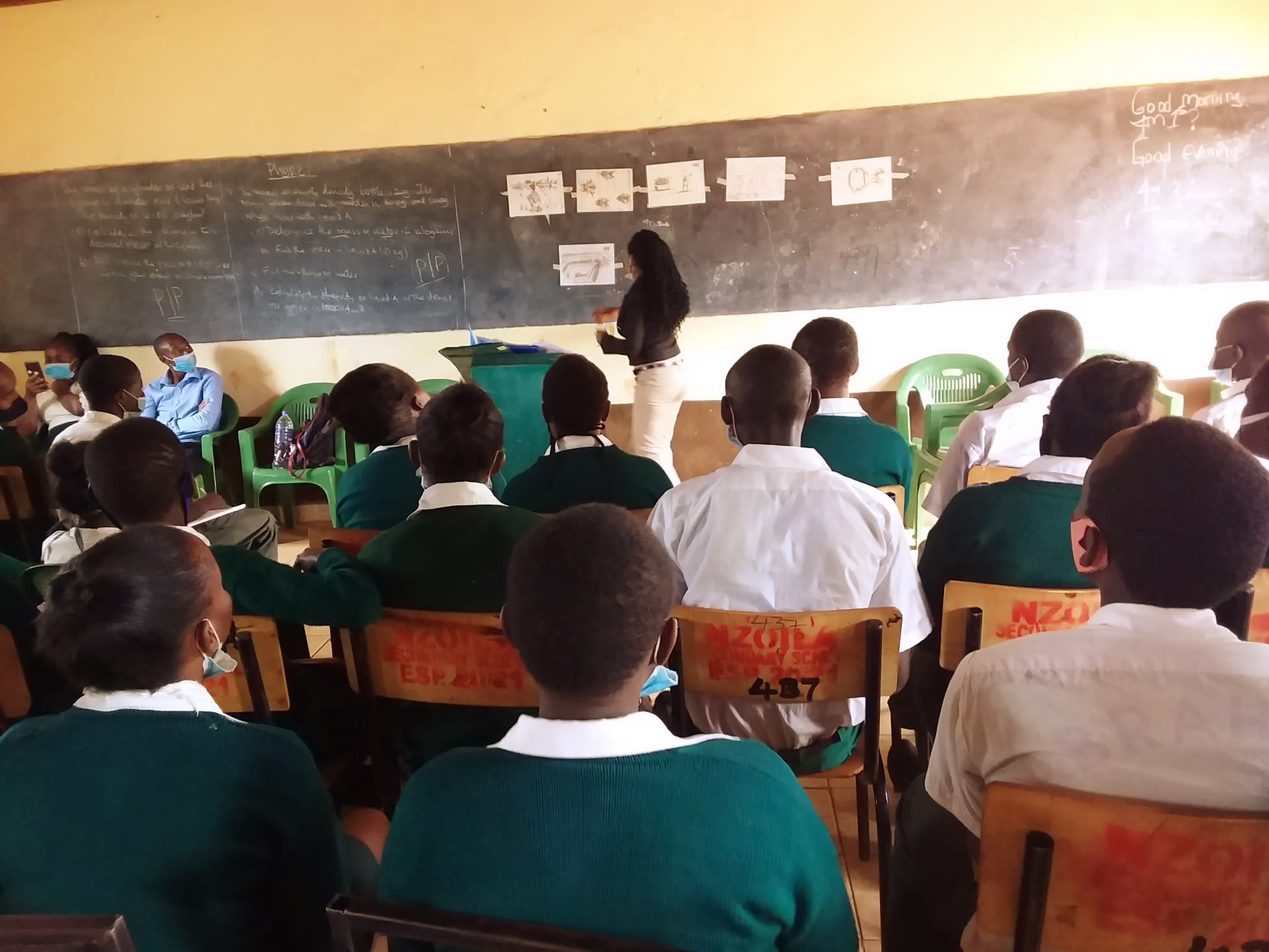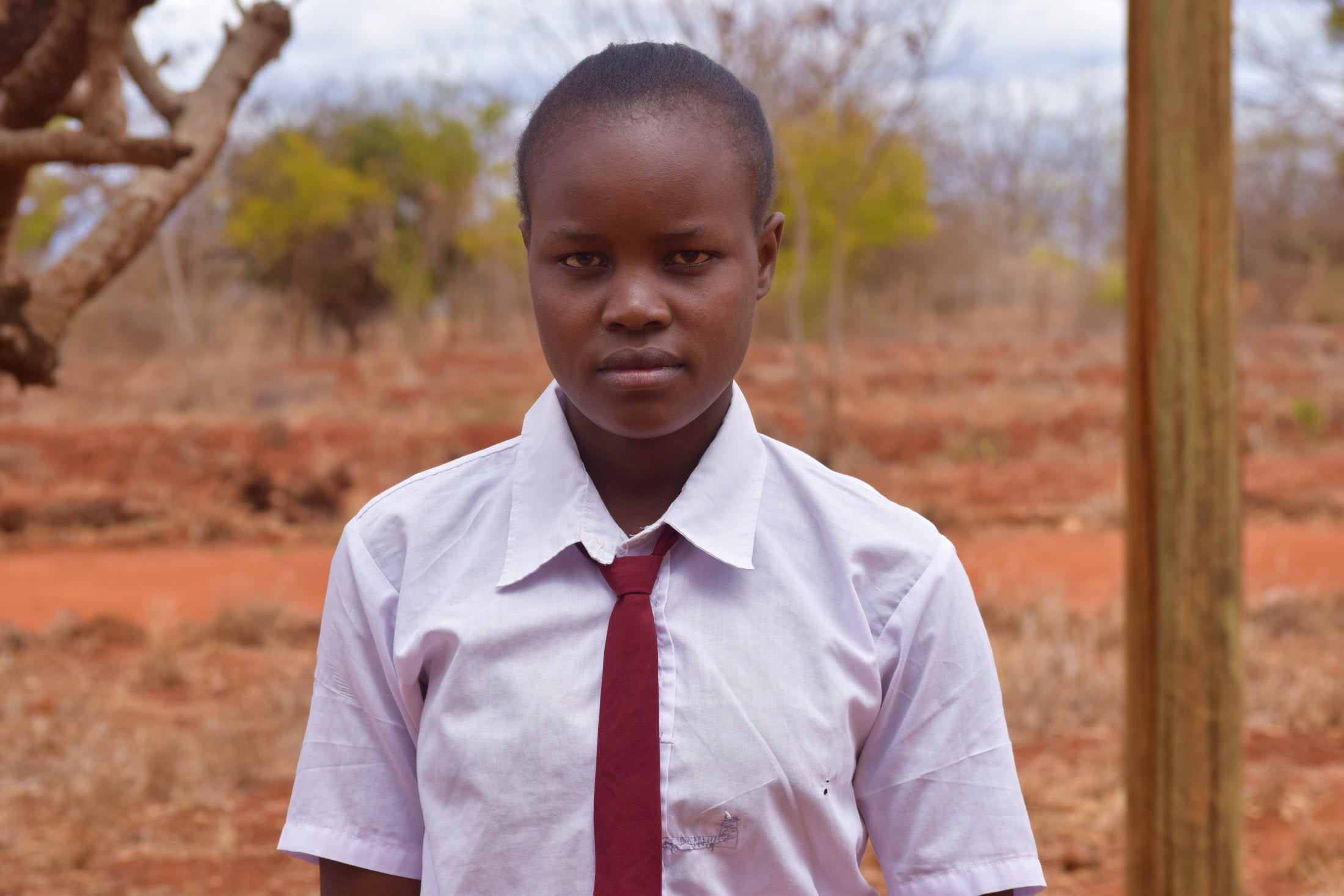Nzoila Secondary School was established in 2008 by the community members with the support of the Africa Inland Church. They formed the school to allow the students to transition from Nzoila Primary School to a secondary school closer to home to reduce school dropouts. The growth of the school has been steered by the support of the parents and the government.
The school encounters many challenges, especially related to water access. The water storage facilities are unable to hold a sufficient water supply for the 145 students. The tanks at the school are leaking and are only big enough to store water for a month. Afterward, the school has to purchase water from boozer companies, which is costly and hinders the school from investing in improvements and growth.
"The insufficient water supply affects the operations of the school programs. With no water, the school schedule delays, and this affects the learning process. Money that has been allocated for the school's development is channeled into purchasing water, and this hinders the school's growth and development," said teacher Jonathan Kaleli Peter.
The water brought by the boozer companies and contracted parents is often drawn from uncertain water sources. This is risky as it may expose the students to contracting waterborne diseases. Students, at times, complain about stomachaches, typhoid, and diarrhea cases. These waterborne illnesses result in absenteeism and, at times, insufficient concentration levels, which may lead to poor academic performance.
Students sometimes lack water for drinking, handwashing, and even cleaning their latrines. The water served to them is also very limited, so they have to use it sparingly to ensure it lasts as long as possible. The school meals program can also be delayed when the kitchen staff have to wait for the water to be delivered.
"During the dry seasons, we usually face a lot of challenges. We may fail to wash the latrines, the meals may delay, and we have to wait for a long time before the food is ready. A lot of time is wasted because of the insufficient water supply," said student Muthoki M.
"Poor sanitation and hygiene standards may result in us contracting water-related diseases. At times, the water brought from the river is not clean and may cause sicknesses."
Rain Tank
We will build a 104,000-liter rain tank for this school, making the others look tiny in comparison. Because of how rarely it rains in Southeastern Kenya, this tank's large volume is designed to store as much water as possible during the seasonal rains, making more water available through the dry months. This water will benefit the students, teachers, and additional staff.
Parents will mobilize the materials needed for construction, including sand, stones, and water. They will also lend their strength and time to help with the construction. We will complement their materials with a skilled artisan to lead the project and provide the tools, lumber, metal, cement, and gutter system.
As soon as the tank has time to cure, it can begin collecting rainwater for the school's use.
Training
We will train students and staff on sanitation, hygiene, and other topics for one day. Those in attendance will form a school health club that will promote good hygiene and sanitation practices at school and home. They will learn all of the steps to proper handwashing, how to treat water, and how to keep their environment clean. The school will also be taught how to oversee best and maintain their new rain tank and handwashing stations.
Handwashing Stations
A total of 3 handwashing stations will be installed upon the project’s completion and before training. These are 1,000-liter plastic tanks fitted with three taps each, allowing nine students to wash their hands at once. The student health club and school management will be responsible for making sure the tanks are filled with water and that a cleaning agent such as soap or ash is always available.

 Rainwater Catchment
Rainwater Catchment
 Rehabilitation Project
Rehabilitation Project































